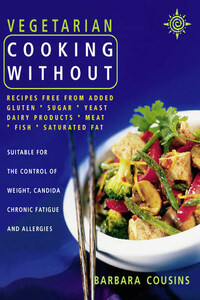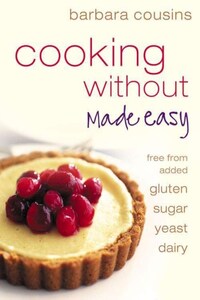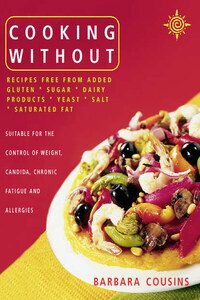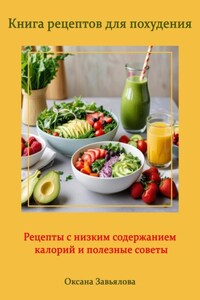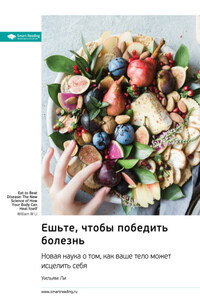Following the success of my first volume of Cooking Without, I was asked to write a follow-up. I decided that this time I would write a vegetarian version, mainly because good vegetarian recipes are harder to find when avoiding the use of cream, cheese, wheat etc. I know that many individuals who enjoyed the recipes in my first book have been requesting more, so here they are. I must admit that I quite impress myself at times when I create wonderful new dishes without the use of so many foods that seem essential ingredients in many peopleâs diets. It just goes to show that eating can be a pleasure even for those on restricted regimes.
Although I have written a little about the reasons for cooking without certain foods, I didnât want to make this text a repeat of my first book because there is so much more I want to say. Being in practice as a nutritional therapist I am continually learning new information and I would like to impart some of this information to you. I have had lots of feedback about the introductory section in Cooking Without and the consensus of opinion seems to be that it is a simple and common sense approach to health and healing. I would like this volume to continue that approach in some new areas of understanding.
Food is a serious business. We are what we eat and food is our fuel. Yet, it is only in the last few years that food has finally begun to be recognised in the West as being an important aspect of health and healing. Naturopaths and nutritional therapists have always been aware of the effect of diet, not only on our physical health but also on our mental and emotional wellbeing. There has, however, been a reluctance by many people to accept this. Diet is the foundation of our health, we cannot abuse our bodies by feeding it a poor diet and then expect therapists or doctors to be able to make us better.
Since the advent of modern agriculture and food processing techniques, our diet has moved further and further away from the natural foods which have sustained traditional communities all over the world for centuries. Individuals in such communities live on a mainly vegetarian diet of whole grains, beans, locally grown vegetables and fruits with small quantities of meat and fish eaten when available. Nowadays meat, sugar and fat consumption has generally taken over from traditional diets and the consumption of vegetables, fruit, grains and pulses has substantially declined. Added to this is the fact that most of the food on supermarket shelves bears little or no resemblance to its origins. It has been over-processed, coloured, flavoured, textured, preserved, packaged, flown half way round the world and will probably keep for years. Good food goes off. The trick is to eat it before it does.
A healthy eating lifestyle starts with recognising that symptoms of illness donât just happen â they are the bodyâs way of letting us know that all is not well and we have had a hand in creating the problem. Illness represents an invitation to change to a healthier way of living which will not only renew our physical bodies but will calm the mind and the emotions as well.
It really is wonderful at last to see so many people taking responsibility for their own, and their familyâs, health. For too long there has been a mystical âtheyâ. âTheyâ wouldnât let us eat food that was harmful. âTheyâ should provide us with the drugs or operations to heal us. Unfortunately, âtheyâ are often more concerned with their profits, or their power, rather than with our health.
Vegetarianism and Detoxification
Research shows that eating a vegetarian diet improves oneâs chance of avoiding many serious health problems, but that is only the case if you eat a wholesome vegetarian diet. I remember once employing two workmen one of whom told me he was a vegetarian. At lunchtime they disappeared and I saw them sitting outside in their van eating lunch. As it was a miserable cold day, I went outside to invite them in. The vegetarian was eating chips with white bread, the non-vegetarian was tucking into a tuna rice salad with wholemeal bread which he had prepared that morning!
Eating a wholesome vegetarian diet encourages toxicity to be removed from the body. If you study the diagram below you will see meat, fish, eggs etc, at one end of a sliding scale, while fruit and salads and vegetables are at the other end. Those foods on the left side of the scale help to keep toxicity in the body and will even be craved to push toxicity back in if it comes out too quickly. At the other end of the scale are, first of all, the fruits. Fruits pull toxicity out of the cells, though not necessarily out of the body. In the past, fruit fasts were recommended by naturopaths as a therapy to cure ill health. Nowadays, however, most peopleâs bodies, and in particular their livers (the main organ of detoxification), are too suppressed to cope with the sudden surge of toxicity which comes out of the cells when eating lots of fruit and fruit juices. This means that individuals these days often feel too ill on a fruit fast to be able to continue. Raw vegetables and salads are the next most eliminative foods, followed by cooked vegetables, which still eliminate but in a less aggressive way than fruit or even salads. Leafy green vegetables are stronger eliminators than root vegetables.
